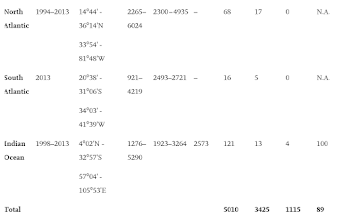Children now in days are gaining more weight that they’re becoming obese. This is due to the fact that not everyone can afford a healthy lifestyle. For instance, if your rich then you have access to fresh food. Schools also play a role in the increase of obesity but have tried to diminish the effects of obesity by changing the food diet they serve at school, but its not always the food that causes obesity it can also have to do with genetics or the lack of exercise.
Believe it or not depending on where you live plays a huge role on one’s diet. If you live in a neighborhood where it’s not safe to walk outside or to simply go for a small jog, then children have no way to exercise in their own community. Social class plays a huge role in obesity. For instance, if you don’t have access to vacant lots, open fields, or can’t afford to place your child in some sort of sport, then that means that’s another opportunity the child is being deprived of. It’s not always the parents fault though, instead it has to do with low economic status. For example, a child who lives in a gated community means they have access to fresh food, open fields, and are more likely to be involved in some sort of sport. Whereas, a child who were to live in an area where there’s gang activity means children can’t go outside and exercise due to the fear of being harmed.
Physical education is also very important but in the United States schools are usually being pressured to focus on test scores. This means more time has to be spent inside the classroom, which means physical education is being cut down in order to accommodate the learning process. When this occurs, it means a child’s recess was removed. Recess is a 15-minute break where a child has access to physical activity. Considering not all children have the privilege to do exercise at home. For instance, researchers state, “many children from disadvantaged backgrounds are not free to roam their neighborhoods or even their own yards unless they are accompanied by adults… recess may be the only opportunity for them to practice their social skills with other children” (Barros et al., 2009, p.434). Even though children may go outside if they’re accompanied by their parent, that won’t always be the case if they’re from a disadvantage background because in most cases the parents have to work in order to support their family.
In some cases, a child’s health can also be a factor of obesity, for instance if the child has asthma, high blood pressure, or elevated cholesterol then there’s a higher risk that child may be obese in the future. Once it comes down to this stage though it becomes dangerous and mortifying considering all a child needs is access to some sort of physical activity.
Children usually prefer snacks over healthier full course meals which are healthier. Considering children have small stomachs, a snack is an unhealthy supplement to the nutrition system of a child.
Social relationships can also be a factor to a child’s obesity. For instance, if a child is lonely and has less friends compared to the average child it can increase the chance of obesity. A reciprocal relationship is apparent: Children with poor social skills and few friends are more likely to become obese and vice versa (Jackson & Cunningham, 2015; Vandewater et al., 2015).
Needs, Prevention, & Solution
In some cases, ethnic gaps such as 9% of Asian Americans but 26% of Hispanic Americans obesity might be genetic. Knowing or believing that genes might be genetic might lessen the blame but doesn’t exclude the fact that over the year’s obesity has drastically been increasing over time.
In figure 1, we see some examples of ethnic groups which show the percent of obese children through the ages of 6 and 11 in the united states.
Although in same cases family habits can be passed down, good or bad. Especially if it starts from infancy to early childhood. If children are accustomed to usually getting what they want, then that can be a factor to obesity. In order to diminish this and create a healthy lifestyle for a child one would need to start teaching them from an early stage to prefer healthier snacks, instead of junk food.
Figure 2 is an example of childhood obesity around the world. This demonstrates the catastrophic problem of obesity, which now leads to more deaths than malnutrition.
Obesity is a catastrophic problem that’s needs more awareness due to risk factors that can lead to death. Children now in days are gaining more weight by the second and can be easily avoided if education systems improve. In doing so children should have more time for physical activities such as an extended recess. It is clear that not everyone can afford a healthy lifestyle, but children can be provided the chance while they’re at school at least. You don’t necessarily need to be rich to have access to healthy food if it’s being provided by the school.
References
Berger, Kathleen Stassen. The Developing Person Through the Lifespan. Worth Publishers, 2017.
Figure 1 Data from Ogden et al., 2014.
Figure 2 Data from M. NG ET AL, 2014.

















 ·
·










